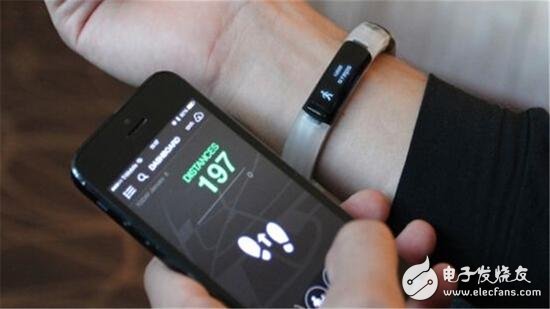
Smart bracelets, in our lives, also have a variety of names such as smart watches, smart pedometers and mobile medical checklists. These are the names that everyone gives according to its function. The definition of the smart bracelet in writing is very simple. It is a wearable smart device that is presented to people through the form of a watch, which is easy to carry, commonly known as a bracelet.
People bring smart bracelets to record real-time data such as exercise, sleep, and diet in daily life, and synchronize these data with mobile phones, tablets, and iPod touches to play a role in guiding healthy living through data.
The general smart bracelets on the market have different functions, most of which are used to track health data. For example, monitoring user health data such as steps, mileage, calorie consumption, and sleep quality, providing users with reasonable dietary, exercise, or sleep advice to help users better manage their health.
Most bracelets have 2-3 of them. Of course, there are also a small number of hospitals using disease detection equipment in the form of watches, such as: oximeter. But in the hospital, everyone is basically called oximeter, rarely called smart bracelet, of course, some merchants call it a smart bracelet for sales to individual users.
In addition to watch-type medical devices used by hospitals to diagnose diseases, most of the smart bracelets currently on the market are not tested by secondary medical devices, or are not licensed for secondary medical devices. A smart bracelet without a medical device license should be called an electronic product. The measured human health index can only be used as a reference and cannot be used for medical diagnosis. Therefore, the smart bracelets in our lives are usually non-medical electronic products.
Whether it is a foreign smart bracelet brand or a domestic brand, the core function of the smart bracelet is to serve as a health tracker to help users better manage their health, which is very helpful for our daily sports.
So, is the accuracy of the data such as step counting, calorie consumption, and deep sleep time of the smart bracelet reliable?
Is the step counting function reliable?
The pedometer is the core selling point of the smart bracelet. The step-by-step principle is based on a three-axis accelerometer to achieve the number of tracking steps, which is recorded as soon as the hand moves. Many smartphones have this capability, and the pedometer function can be implemented by a combination of built-in smart sensors and software.
In fact, we can judge his accuracy from its step-by-step principle. For example, sitting in a chair and shaking it, it will record the number of steps. However, the smart bracelet will record the user's daily walking situation and target achievement rate through built-in sensors, and record the movement trend over a period of time to help understand and analyze the user's health habits, which has certain reference value.
How does calorie consumption come from?
The smart bracelet calculates the calories by calculating the number of steps and then the calorie consumption according to a certain algorithm, including the number of steps in our normal walking, jogging, running, etc., but it is difficult to judge the sports. Proportion and intensity.
For example, if someone ran 21,000 steps, if the smart bracelet is walking by default, there will be some error compared with the heat consumed by running. Plus the pedometer itself is not particularly accurate, so calorie consumption monitoring can only provide a reference for our calorie consumption.
However, some mobile phone software of the smart bracelet has the function of diet monitoring. It scans the food QR code or enters the name of the thing through the mobile phone software. It calculates the heat contained in the food. This manual input and the complexity of Chinese food are obtained. The accuracy of the data will be relatively accurate, but it can only be a reference value for our diet. People with diabetes can refer to it.
Is the detection of sleep quality inaccurate?
Another important function of the smart bracelet is to monitor the quality of sleep, including sleep time, wake up time, light sleep time, wake up time and deep sleep time. This is another propaganda point of many bracelets.
Some smart bracelets form a long-term mechanism through daily monitoring to map out the trend of long-term sleep quality, helping you understand sleep conditions and make improvements.
But is the detection of sleep quality not allowed?
First, let's talk about the sleep calculation of the smart bracelet. Most bracelets calculate the sleep based on the triaxial acceleration sensor. For example, frequent turning is shallow sleep or awake.
However, medical examination of deep sleep or shallow sleep should be diagnosed by multiple parameters such as EEG, eye movement, chest and abdomen movement. From this calculation of the principle of sleep quality, the smart bracelet does not currently have EEG and eye movement functions. It can be said that the quality of sleep based on body motion calculation can only be used as a reference and is not accurate.
Of course, it is not that the smart bracelet is not accurate. In daily life, there is no need to compare the smart bracelet with medical equipment. Because medical instruments should be used to treat people and save lives, they must be accurate, otherwise they will be fatal. As long as there is a reference in daily life.
In general, the smart bracelet brings fashion and fun to our lives, making our lives smarter.
LiFePO4 Battery Cell
Lifepo4 Cells,Li-Ion Battery,Deep Cycle Lifepo4 Battery,Rechargeable Lifepo4 Battery
Zhejiang Xinghai Energy Technology Co.,Ltd , https://www.headwayli-battery.com